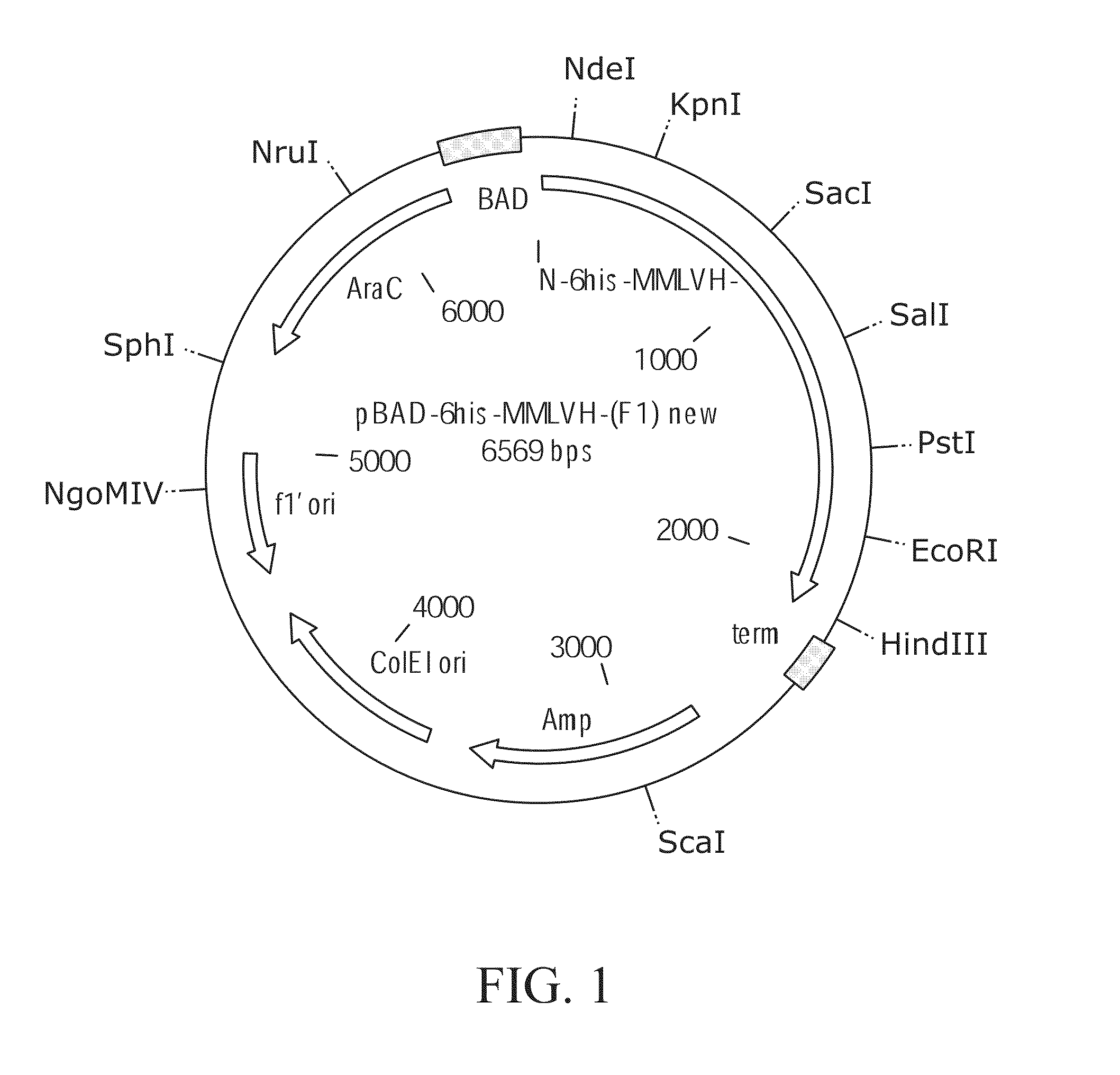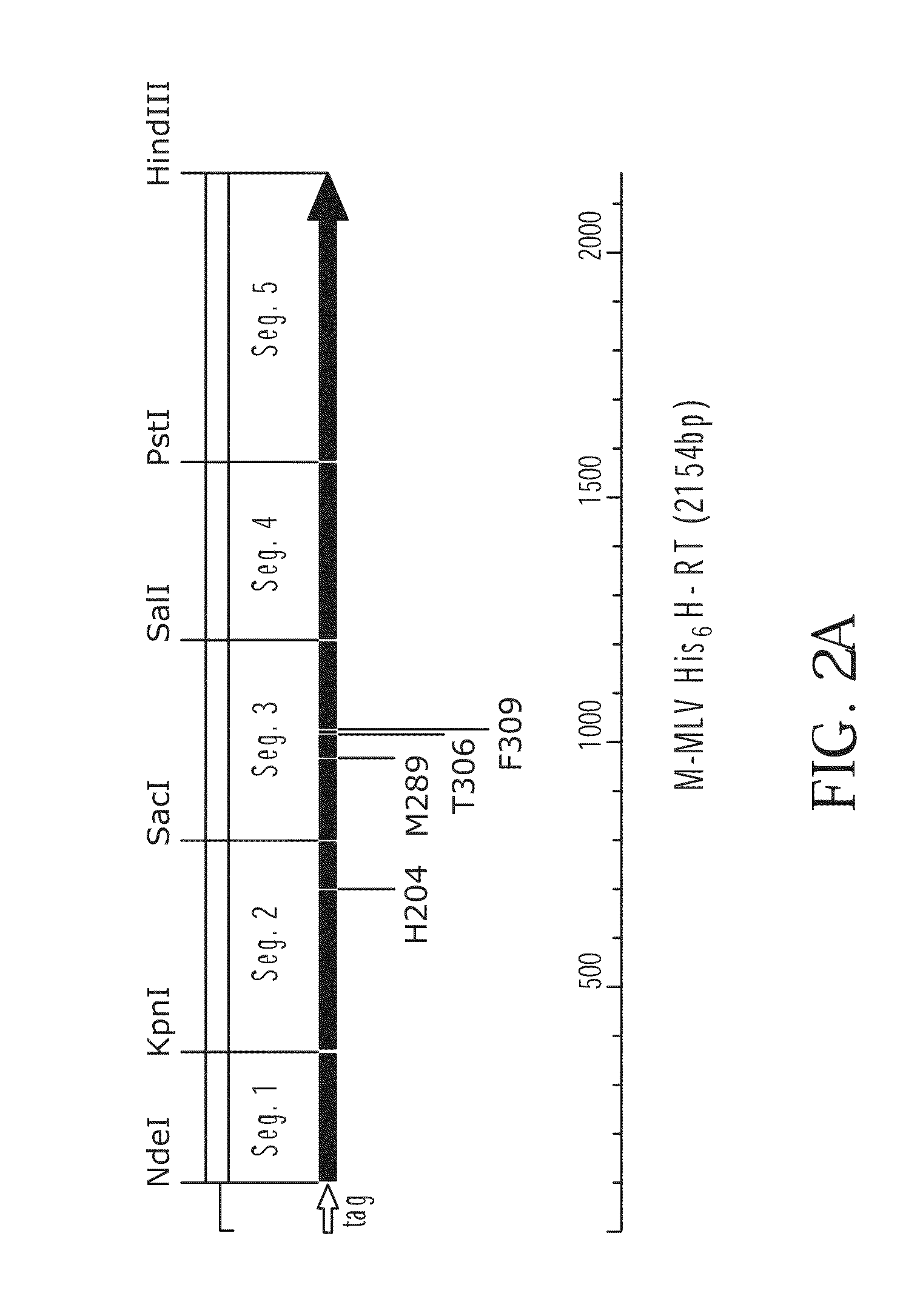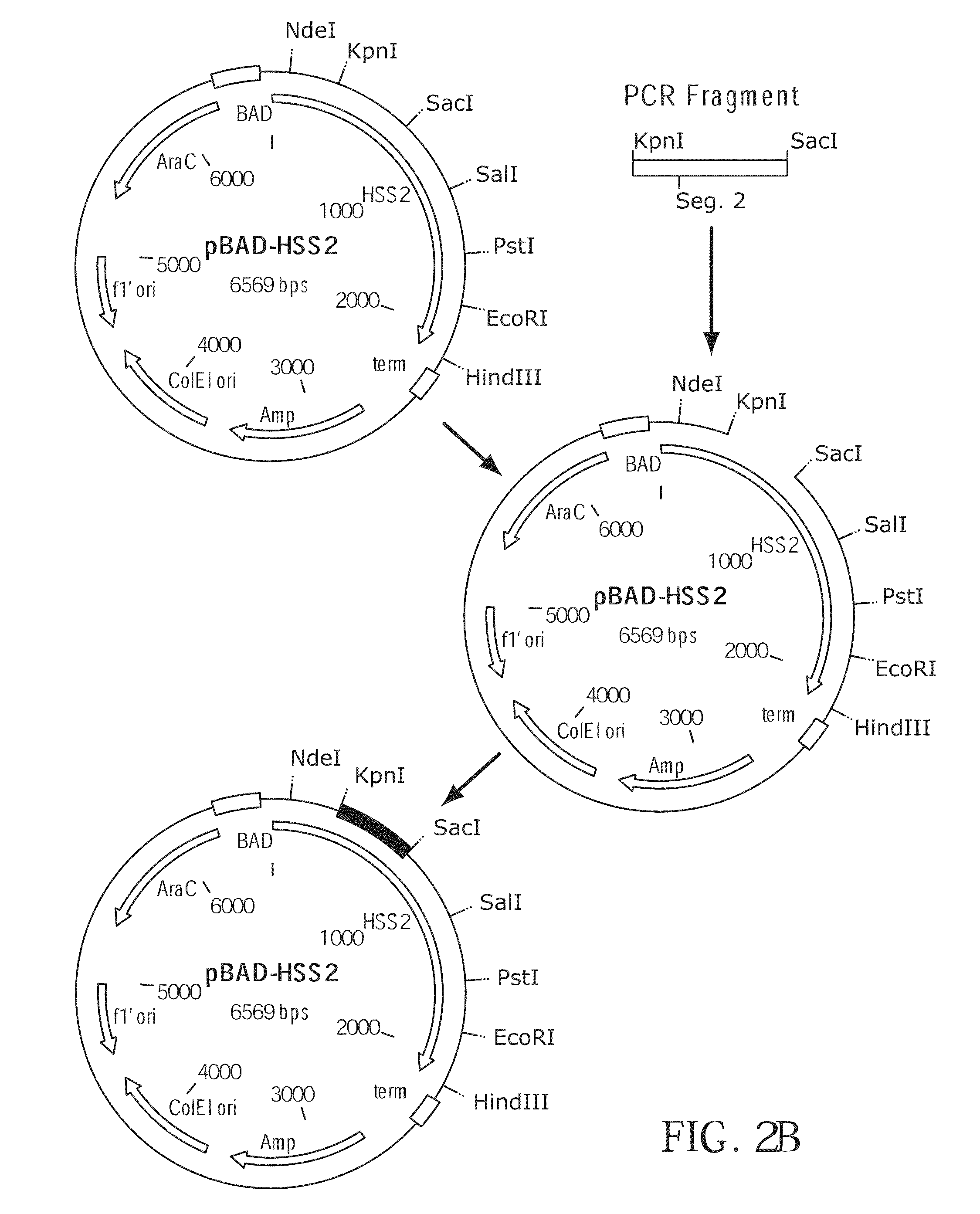Thermostable reverse transcriptases and uses thereof
a reverse transcriptase and thermostable technology, applied in the field of molecular and cellular biology, can solve the problems of inefficient use of unmodified reverse transcriptase to catalyze reverse transcription, mrnas refractory to first strand synthesis, introduction of errors, etc., and achieve the effect of increasing thermostability, reducing, substantially reducing, or no detectable rnase h activity
- Summary
- Abstract
- Description
- Claims
- Application Information
AI Technical Summary
Benefits of technology
Problems solved by technology
Method used
Image
Examples
example 1
Preparation of Mutant Reverse Transcriptases
[0292]Plasmid pBAD was obtained from Invitrogen Corporation, Carlsbad, Calif. and the coding sequence of M-MLV reverse transcriptase was inserted to produce plasmid pBAD-6-His-M-MLV H− (F1). Plasmid pBAD-6-His-M-MLV H− (F1) was used as both a cloning vector and as a target for PCR mutagenesis (FIG. 1). pBAD-6-His-M-MLV H− (F1) replicates in E. coli and confers ampicillin resistance to transformed cells. The M-MLV reverse transcriptase gene is expressed from the ara BAD promoter which is induced by the presence of arabinose. The promoter is repressed by the product of the araC gene, which is present on the plasmid. The host used, E. coli strain DH10B, is an araD mutant and cannot metabolize arabinose, making arabinose a gratuitous inducer in DH10B cells transformed with pBAD-6-His-M-MLV H− (F1). The plasmid contains a 6 histidine containing leader sequence in frame with the coding sequence of the M-MLV reverse transcriptase gene. The gene s...
example 2
Screening for Thermostable Reverse Transcriptases
[0301]In this example the following solutions were used:
EG-per liter: 20 g bacto-tryptone, 10 g bacto yeast extract, 2 ml glycerol, 0.54 g NaCl, 0.194 g KCl
EG-arabinose—150 ml EG plus 1.5 ml of 10 mg / ml ampicillin and 1.5 ml of 20% (w / v) arabinose (if plates are to have arabinose)
20×PEB-I Buffer—18% (w / v) glucose, 500 mM Tris-HCl (pH 8.0), 200 mM EDTA
Kinase Storage Buffer—50% (v / v) glycerol, 20 mM Tris-HCl (pH 8.0), 100 mM KCl, 5 mM βME
100 mg / ml lysozyme—made in Kinase Storage Buffer and stored at −20° C.
2×PLD—5 ml of 20×PEB-I, 1 ml of 1 M DTT, 5 ml of 10% (v / v) Triton X-100, 1 ml of 100 mg / ml lysozyme and 38 ml of water
2×PZD—0.5 ml of 20×PEB-I, 100 μl of 1 M DTT, 0.5 ml of 10% (v / v) Triton X-100, 10 μl of zymolase and 3.9 ml of water
10× Poly(C) Reaction Buffer—500 mM Tris-HCl (pH 8.4), 500 mM KCl, 100 mM MgCl2
[0302]1.25× Reaction Mix—1 ml of 10× Poly(C) Reaction Buffer, 100 μl of 1 M DTT, 1 ml of poly(C) / oligo(dG) (30 mM / 12 mM in nu...
example 3
TdT Reverse Transcriptase Mutants
[0311]In checking fidelity mutants of reverse transcriptase (RT) for misextension in a 3 dNTP assay, it was observed that SUPERSCRIPT™ II reverse transcriptase extended 2-3 bases past the end of the template in the presence of 3 and 4 dNTPs. This non-template directed extension or TdT activity is reduced in many mutants, but in a few such as F309N and T197E it appears that this activity is severely reduced or eliminated. These mutants are probably in close proximity or in contact with the template-primer as determined by homology to HIV reverse transcriptase and its crystal structure with bound template-primer.
Methods
[0312]Mutagenesis
[0313]For F309N:
[0314]Primers were designed corresponding to the mutant position F309 with the silent insertion of a NgoMIV restriction site at amino acid positions 310-311. The primers encoded a random NNK sequence for this position generating a random library of F309 mutants, where N is any of the four bases and K is T...
PUM
| Property | Measurement | Unit |
|---|---|---|
| temperatures | aaaaa | aaaaa |
| temperature | aaaaa | aaaaa |
| temperature | aaaaa | aaaaa |
Abstract
Description
Claims
Application Information
 Login to View More
Login to View More - R&D
- Intellectual Property
- Life Sciences
- Materials
- Tech Scout
- Unparalleled Data Quality
- Higher Quality Content
- 60% Fewer Hallucinations
Browse by: Latest US Patents, China's latest patents, Technical Efficacy Thesaurus, Application Domain, Technology Topic, Popular Technical Reports.
© 2025 PatSnap. All rights reserved.Legal|Privacy policy|Modern Slavery Act Transparency Statement|Sitemap|About US| Contact US: help@patsnap.com



